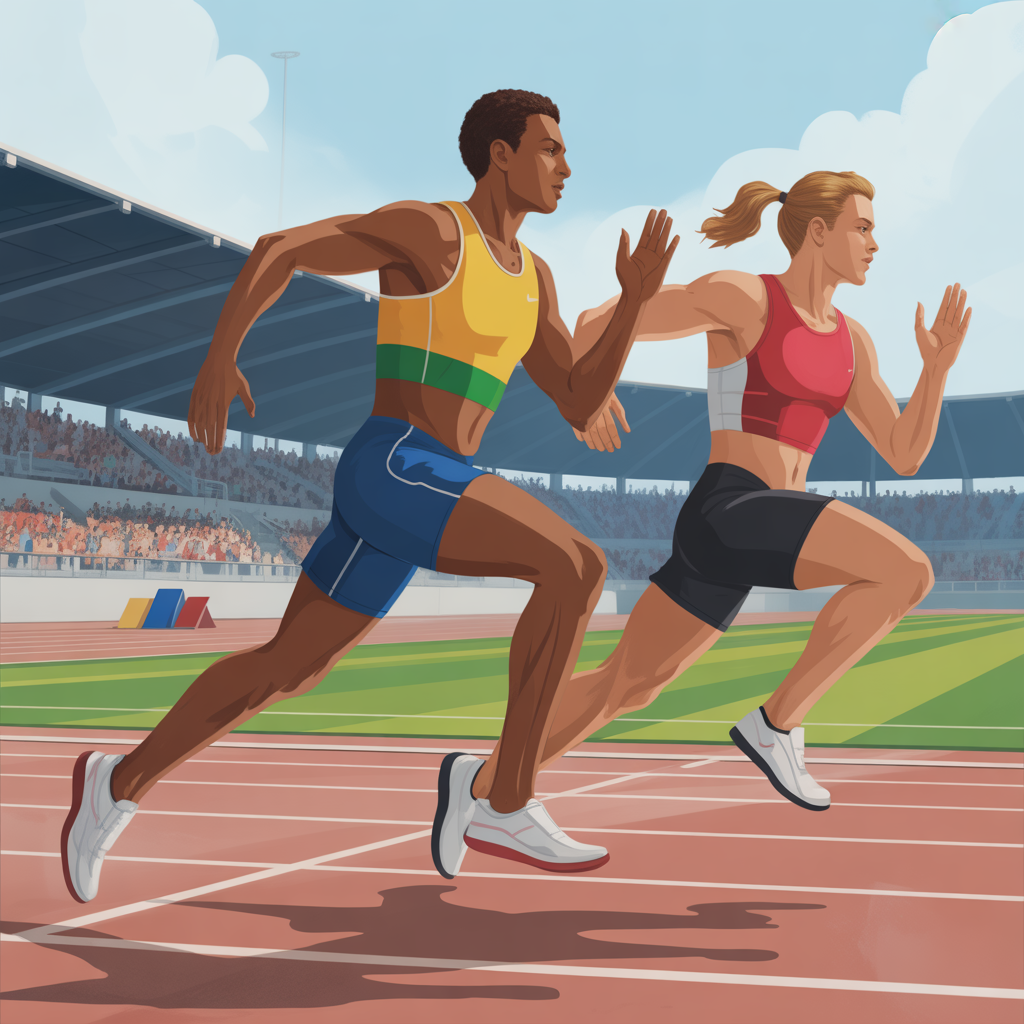Does Hormone Therapy Eliminate Biological Advantages in Transgender Athletes?


Table of Contents
ToggleImagine hormone therapy as a magical solution to level the playing field for transgender athletes; however, reality reveals a more nuanced picture. Research shows that while hormone treatment reduces some biological advantages, it doesn’t completely erase them. Trans women, for example, may still hold certain physical advantages over cisgender women in areas like strength and endurance. This ongoing debate requires continuous scrutiny to develop fair and inclusive sports policies. How does this impact the future of competitive sports?
When exploring gender-affirming hormone therapy (GAHT), it’s critical to understand its role in aligning individuals’ physical characteristics with their gender identity. Testosterone therapy for trans men and feminizing hormonal therapy for trans women lead to significant body composition changes. Trans women experience a 30% increase in fat mass and a 5% decrease in muscle mass within a year, aligning closer to cisgender women over time. Despite these changes, some studies indicate that trans women may retain certain athletic performance advantages, including faster 1.5-mile run times. However, the impact of GAHT on transgender athletes in competitive sports remains complex. Advantages in strength and other performance metrics can diminish, yet more controlled longitudinal studies are needed to fully understand these dynamics.

Although gender-affirming hormone therapy (GAHT) influences athletic performance in transgender individuals, the extent varies between transgender men and women. For trans men, testosterone therapy considerably improves athletic performance, aligning their push-ups and run times with those of cisgender men after one year. This indicates that hormone therapy amplifies strength and endurance metrics for trans men. Meanwhile, trans women experience a reduction in competitive advantages over time. Despite two years of feminizing hormone therapy, trans women still surpass cisgender women in push-up performance and maintain a 12% faster run time. They also retain higher absolute lean mass compared to cisgender women. While GAHT diminishes some advantages, trans women continue to exhibit certain performance edges in athletic activities.

Understanding the role of hormone therapy in shaping athletic performance sheds light on its influence on competitive dynamics. Transgender athletes undergoing hormone therapy experience changes in muscle mass and performance metrics. For transgender women, despite reduced muscle mass, they maintain athletic advantages in pushups, situps, and endurance, indicating a persistent competitive edge.
Here’s a breakdown of performance metrics post-hormone therapy:
| Metric | Advantage Over Cisgender Women |
|---|---|
| Pushups | 10% |
| Situps | 6% |
| 1.5-mile Run | 12% faster |
| Muscle Mass | Higher absolute lean mass |
| Endurance | Persists beyond 12-months |
These findings suggest hormone therapy doesn’t fully eliminate competitive advantages, emphasizing the need for ongoing evaluation in transgender athletes’ participation in sports.
Despite the growing body of research on hormone therapy’s impact on transgender athletes, significant limitations hinder the ability to draw definitive outcomes. Most studies lack longitudinal control groups, making it tough to assess if hormone therapy truly eliminates biological advantages. Performance metrics can be misleading due to broad time bins, especially during the initial year of hormone therapy. The absence of standardized protocols regarding timing and dosage complicates comparisons between transgender and cisgender athletes. Retrospective studies often suffer from small sample sizes, limiting generalizability. Variations in individual training habits and fitness assessments introduce confounding factors, affecting the accuracy of observed changes. Hence, study limitations leave you uncertain about the actual effects of hormone therapy on athletic capabilities.
As sports organizations grapple with the complexities of transgender inclusion, developing evidence-based policies becomes vital. The International Olympic Committee is revising its guidelines, acknowledging that while hormone therapy alters performance, some biological advantages in endurance for trans women might persist. Scientific research emphasizes the significance of considering both performance outcomes and athletes’ personal experiences. World Athletics’ ban on trans athletes who underwent male puberty underscores tensions between inclusivity and competitive integrity. Policy development must weigh the timing of hormone therapy, as those shifting before puberty exhibit fewer retained advantages. Ongoing debates and research are imperative for crafting policies that balance fairness with inclusion, addressing the nuances of hormone therapy and the varied athletic capabilities of transgender athletes.
Hormone therapy for transgender athletes triggers significant physical changes, impacting muscle mass, endurance levels, and recovery times. You’ll notice trans men gain muscle and strength, aligning performance with cisgender men, while trans women experience reduced muscle mass and increased fat. Emotional effects also occur, aiding mental well-being. These changes promote competitive fairness, but policy implications remain complex, as some performance disparities can persist, influencing debates on sports inclusion and equality.
When you undergo hormone therapy, expect side effects like emotional changes and weight fluctuations. Trans men might see increased muscle mass and bone density, but face skin changes and mood swings. Trans women might experience reduced muscle mass and increased fat, with cardiovascular risks. Fertility issues could arise for both. These changes and risks highlight the complexity of hormone therapy, requiring careful consideration and monitoring to manage potential side effects effectively.
In the sports arena, you’d find that biological advantages for males include higher muscle density and robust bone structure, which improve strength training efforts. Males often have superior endurance levels and cardiovascular capacity, thanks to larger heart sizes and lung volumes. Their recovery speed and metabolic rate often outpace females’, aided by favorable fat distribution and hormonal differences. These factors contribute to improved injury resilience and general performance.
In the world of sports, hormone therapy serves as the bridge between two lands—biology and identity. While it narrows the gap, it doesn’t fully erase the footprints of past advantages. Research shows trans women retain some edges, like stronger winds in a sail, even after treatment. This underscores the need for policies that balance inclusivity and fairness. Keep the torch of evidence and evaluation burning; it lights the path toward equitable competition for all athletes.
 News and AdvocacyNovember 14, 2025Rainbow Victories: 2025’s Most Pro-LGBTQ+ States Revealed
News and AdvocacyNovember 14, 2025Rainbow Victories: 2025’s Most Pro-LGBTQ+ States Revealed News and AdvocacyNovember 14, 2025Transgender Sanctuary States: Protecting Rights, Providing Hope
News and AdvocacyNovember 14, 2025Transgender Sanctuary States: Protecting Rights, Providing Hope Featured PostsNovember 13, 2025When Restroom Policing Backfires: The Hotel That Went Too Far
Featured PostsNovember 13, 2025When Restroom Policing Backfires: The Hotel That Went Too Far Featured PostsNovember 13, 2025Sex, Safety, and Seduction: A Trans Girl’s Guide to Hookups
Featured PostsNovember 13, 2025Sex, Safety, and Seduction: A Trans Girl’s Guide to Hookups